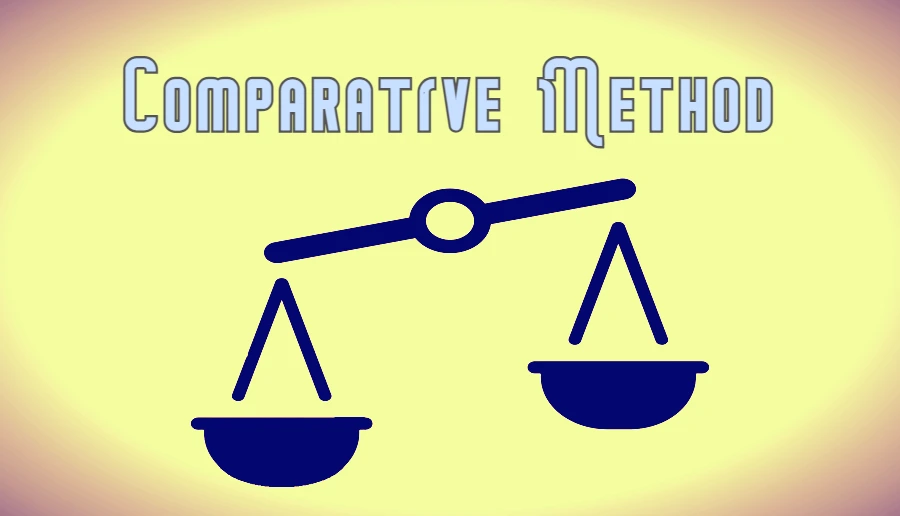The Role of Mass Media in Shaping Public Perceptions of Social Issues
Mass media profoundly influences public perceptions of social issues by setting agendas, framing narratives, and priming attitudes. While it raises awareness and inspires change, risks like sensationalism and bias can distort views.
As media evolves, ethical standards and media literacy are essential for fostering informed, balanced, and compassionate public discourse. Let’s explore how mass media shapes public opinion on today’s social issues.

Introduction: Mass Media and Social Issues
Mass media has long played a significant role in shaping public perceptions, attitudes, and awareness of social issues. From the earliest days of printed newspapers and radio broadcasts to today’s global social media platforms, mass media has remained a central force in the dissemination of information, influencing how societies understand and react to pressing social matters.
Whether covering issues like poverty, healthcare, climate change, racial discrimination, or gender inequality, the media wields tremendous power to influence collective perspectives.
In today’s increasingly digital world, the scope of mass media’s impact has broadened dramatically. News cycles are continuous, stories are consumed instantaneously, and narratives are constantly evolving. While the media has the potential to enlighten and empower the public, it can also misinform or sensationalise.
In this article, we will examine how mass media shapes public perceptions of social issues, its influence on societal responses, the potential risks and benefits, and the ethical responsibilities media entities hold.
The Influence of Media on Public Perception
Mass media shapes public perception through several mechanisms: agenda-setting, framing, and priming.
- Agenda-Setting: Agenda-setting theory posits that while media may not necessarily determine what people think, it does influence what people think about. By choosing which stories and issues to cover, the media controls the public’s “mental agenda.” For instance, in times of economic crisis, news outlets may give priority to issues like unemployment, inflation, or government economic policy. These repeated exposures lead audiences to view these topics as important, influencing their conversations, concerns, and often their voting behaviors.
- Framing: Media framing shapes how a story is presented, influencing audiences’ interpretations and opinions. Through specific language, imagery, and narrative emphasis, media can frame social issues in ways that affect audience perception. For example, stories about crime that emphasize certain racial or socio-economic stereotypes can lead to biased perceptions and increased stigmatization of certain groups.
- Priming: Priming refers to the effect media exposure has on shaping people’s judgments and behaviors regarding related issues. By repeatedly highlighting specific aspects of social issues, such as the plight of refugees or healthcare inequalities, media can activate certain beliefs and attitudes. This, in turn, influences the way audiences react to similar issues in real life, such as supporting or opposing policies related to immigration or healthcare reform.
Mass Media and Social Issues: A Historical Overview
Over time, mass media has consistently adapted to cover pressing social issues. The evolution of the media landscape has played an instrumental role in how these issues are reported and perceived:
- Early Print Media: The advent of the printing press in the 15th century marked the beginning of mass communication. Newspapers and pamphlets allowed for the spread of ideas and information, making issues like the abolition of slavery and women’s suffrage public matters. Through investigative journalism, early print media could unveil injustices, rallying public opinion and calling for societal change.
- Radio and Television: With the rise of radio and television in the 20th century, social issues became household discussions. Broadcasts allowed issues like civil rights, poverty, and environmentalism to reach a wide audience quickly. For example, the Civil Rights Movement of the 1960s was significantly influenced by television coverage, which allowed viewers nationwide to witness racial violence and protests, heightening awareness and support for the movement.
- Digital and Social Media: The digital revolution has exponentially increased the reach and immediacy of news. Social media platforms like Facebook, Twitter, and Instagram allow for global dissemination of stories, sometimes in real-time. They also provide individuals a platform to share their own stories, as seen with the #MeToo and Black Lives Matter movements, which have had a profound impact on societal discourse and policy.
Case Studies: The Role of Media in Shaping Perceptions of Social Issues
To understand the role of media in shaping public perception, it is helpful to examine specific case studies where media coverage has had a demonstrable effect on public opinion and societal response.
a. The Civil Rights Movement
The Civil Rights Movement in the United States serves as one of the most profound examples of the media’s impact on public perception. By bringing images of racial violence and police brutality into the homes of Americans across the nation, television news broadcasts played an essential role in shifting public opinion and rallying support for civil rights legislation. Media coverage made the struggle for equality visible, tangible, and pressing to viewers who may have otherwise been unaware of the issue.
b. The HIV/AIDS Crisis
Media coverage of the HIV/AIDS crisis in the 1980s shaped perceptions of the disease and the communities affected by it.
Initially, media narratives perpetuated stigmatization, framing AIDS as a disease limited to certain marginalized groups, which influenced societal prejudice and delayed comprehensive responses.
Over time, advocacy and awareness campaigns helped reshape the narrative, focusing on compassion, scientific research, and public health, leading to broader acceptance and support for HIV/AIDS awareness and prevention efforts.
c. The #MeToo Movement
In 2017, the #MeToo movement gained momentum through social media, with people worldwide sharing stories of sexual harassment and assault. Mass media’s coverage of this movement shifted public perception on the prevalence and gravity of sexual violence.
Celebrities, news anchors, and other public figures brought mainstream attention to what had previously been a stigmatized issue. The media’s role in amplifying these voices led to widespread societal and policy shifts, including changes in workplace harassment policies and increased support for survivors of sexual violence.
The Impact of Sensationalism and Bias in Media Coverage
While the media has the power to raise awareness and inspire change, it is also susceptible to sensationalism and bias, which can distort public perception.
Sensationalized reporting can lead to misconceptions, fear, or unnecessary alarm about certain issues, often resulting in misplaced public concern or moral panic.
Additionally, bias in media coverage—whether political, economic, or social—can shape narratives in ways that align with specific agendas.
a. Sensationalism in Crime Reporting
Sensationalism is particularly prevalent in crime reporting. The media’s tendency to report on violent crime disproportionately can lead to a heightened sense of fear and anxiety among the public, contributing to distorted perceptions about crime rates and public safety. This can result in support for harsher crime policies, which may disproportionately impact certain communities.
b. Political Bias and Polarization
Political bias in media has intensified in recent decades, with outlets often providing coverage that aligns with specific political ideologies. This has contributed to a polarized media landscape, where audiences are exposed to conflicting narratives on social issues based on their chosen news sources.
Political polarization in media can hinder constructive discourse on social issues, leading to entrenched positions and reduced opportunities for bipartisan solutions.
The Role of Social Media in Democratizing Information and Amplifying Voices
Social media has introduced a new dimension to mass media, enabling individuals to participate in public discourse and share their experiences. This democratization of information has allowed marginalized voices to gain visibility, often bypassing traditional media gatekeepers.
Social media campaigns like #BlackLivesMatter have demonstrated the power of digital platforms to mobilize people, spread awareness, and influence public opinion.
Social media’s visual nature—allowing for real-time sharing of photos, videos, and live streams—has given rise to citizen journalism, which plays a critical role in highlighting issues that may otherwise go unreported. However, the lack of editorial oversight on social media can also result in the spread of misinformation, which poses significant challenges to public perception and understanding.
The Ethical Responsibilities of the Media
Given the media’s influence on public perception, journalists and media organizations carry significant ethical responsibilities.
Ethical journalism requires a commitment to accuracy, fairness, and accountability. This entails verifying facts, providing balanced coverage, and avoiding sensationalism and bias.
Media organizations must also be conscious of the potential harm that biased or inaccurate reporting can cause to individuals and communities.
In cases where social issues intersect with sensitive topics like mental health, domestic violence, or addiction, ethical considerations are particularly important. Journalists should prioritize compassion and respect for those affected, ensuring that their reporting does not exacerbate stigma or prejudice.
The Future of Mass Media and Public Perception
As the media landscape continues to evolve, the ways in which public perception is shaped will also shift. Emerging technologies, like artificial intelligence and virtual reality, are beginning to influence how stories are told and experienced.
AI-driven news algorithms, for example, may shape the news consumption experience by selectively curating stories based on individual preferences, potentially reinforcing existing beliefs and limiting exposure to diverse viewpoints.
The future of media’s influence on public perception will likely hinge on efforts to balance innovation with ethical responsibility. This will require journalists, media organizations, and policymakers to address issues like misinformation, algorithmic bias, and the erosion of trust in news institutions.
Collaborative initiatives focused on media literacy can also empower individuals to critically evaluate the news they consume and become more informed participants in public discourse.
Read Here: The Impact of Social Media on Society: Positive and Negative
Conclusion
The role of mass media in shaping public perceptions of social issues is profound and multifaceted. By setting the agenda, framing narratives, and priming public attitudes, media can bring attention to critical issues, challenge societal norms, and inspire change. However, the influence of the media is not without its risks. Sensationalism, bias, and misinformation can distort perceptions, leading to misguided public responses and deepening societal divides.
As mass media continues to evolve, so too must the ethical standards guiding it. The rise of digital and social media platforms has democratized information, amplifying diverse voices and allowing for real-time, global conversations on social issues. However, these developments also highlight the need for increased media literacy and responsibility among both content creators and consumers. In the pursuit of a more informed and equitable society, the media must remain a source of accurate, balanced, and compassionate reporting, holding itself accountable to the public it serves.
In a world where information is more accessible than ever, the role of mass media in shaping public perceptions remains as relevant and influential as ever. The challenge—and opportunity—lies in ensuring that this influence is used to educate, empower, and promote a more just society.



